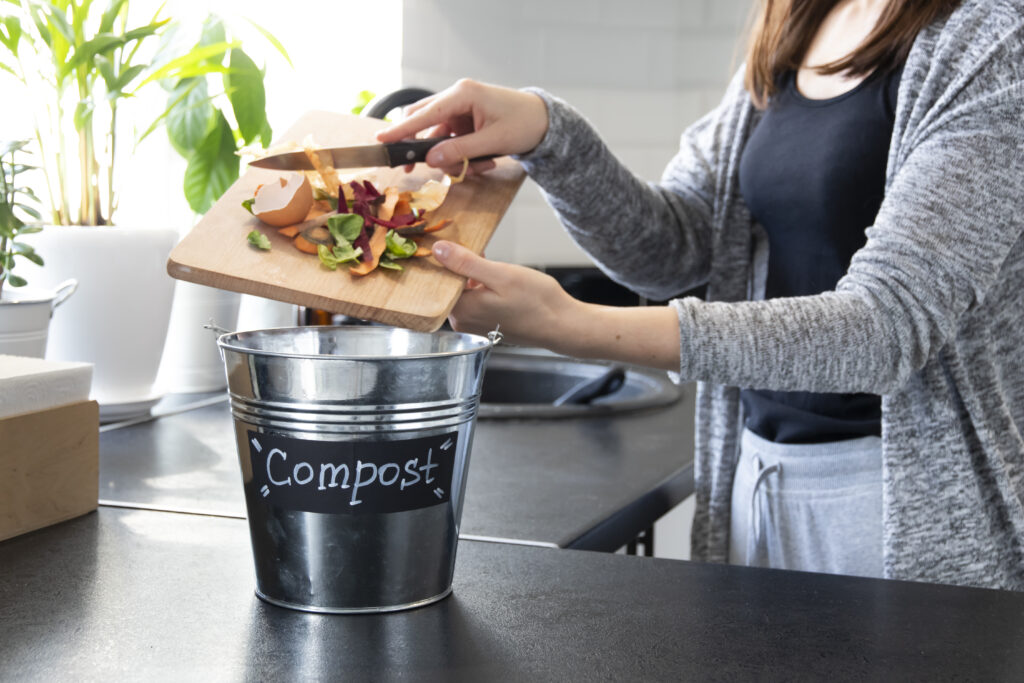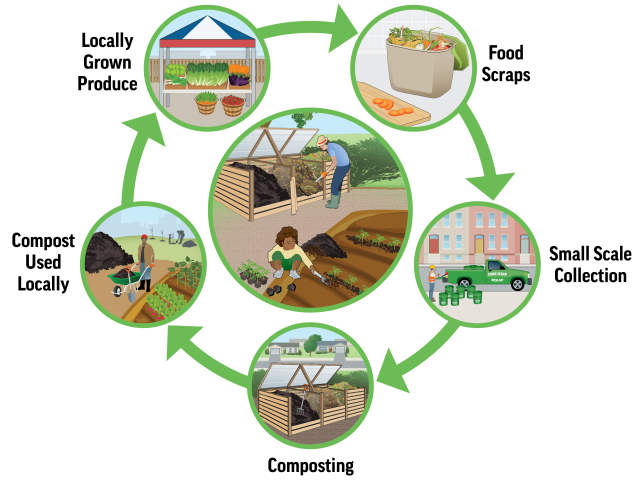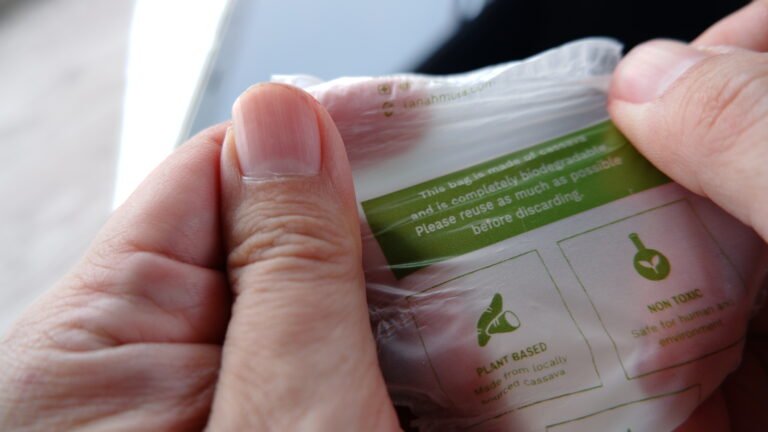
Key Takeaways
- Composting diverts food scraps and yard waste from landfills, cutting harmful methane emissions.
- Finished compost enriches soil, improves water retention, and reduces the need for chemical fertilizers.
- Composting also helps cut down on plastic trash bags and keeps microplastics out of soil and water.
Did you know that something as simple as composting can make a massive difference in the fight against climate change? That’s why many experts highlight the question: why is composting important for both the planet and for us? A study from the S.C.R.A.P. Lab found that composting organic waste could cut more than 50% of carbon dioxide–equivalent greenhouse gas emissions. That’s massive!
This research shows just how powerful composting can be, not only for reducing waste but also for slowing down global warming. In this post, we’ll dig into why composting matters, the key environmental benefits, and how it can help create a healthier, more sustainable future.
What is Composting?
At its core, composting is the natural process of recycling organic materials—like food scraps, leaves, and yard waste into a rich, soil-like substance called compost. Think of it as nature’s way of turning “trash” into treasure.
Here’s how it works: when organic matter breaks down with oxygen, microbes and insects quickly transform it into a nutrient-packed soil amendment. This aerobic process makes composting clean, efficient, and beneficial for the environment.
The result? A dark, crumbly, earthy-smelling material that can be added back into gardens, lawns, and farms to improve soil health, retain moisture, and support healthy plant growth.
Composting is simple, natural, and something anyone can do, whether with a backyard pile, a small bin, or even through community programs.
Why is Composting Important?
Composting matters because it helps reduce waste, keeps harmful greenhouse gases out of the air, and builds healthier soil for everyone. To keep things simple, we’ll walk through six key benefits that show why composting makes such a big difference.
Composting Reduces Waste in Landfills
Did you know that food scraps and yard trimmings make up a huge chunk of what we throw away? When all that organic material goes to the landfill, it takes up valuable space and accumulates quickly. By composting at home or in your community, you’re keeping tons of waste out of landfills and giving it a second life as healthy soil.
✨ And since most food scraps get tossed in plastic garbage bags, composting helps keep those plastics from breaking down into microplastics that pollute soil and water.
Composting Cuts Methane Emissions
Here’s the significant climate connection: when food waste breaks down in a landfill, it doesn’t get any oxygen. That means the waste breaks down anaerobically—or without oxygen—which produces methane gas. And methane is no joke—it’s about 25 times more potent than carbon dioxide at trapping heat in our atmosphere. Composting, on the other hand, is an aerobic process, which means oxygen is involved. This keeps methane out of the equation and makes composting a climate-friendly choice.
Improves Soil Health and Reduces Erosion
Healthy soil is the foundation for healthy plants. Compost is packed with nutrients and organic matter that feed the soil, boost fertility, and improve structure. It also helps soil hold together better, which reduces erosion from wind and rain. Whether you’re gardening, farming, or just caring for your lawn, compost gives your soil the support it needs to thrive.
Conserves Water
Compost is like a sponge in the soil—it helps the ground soak up water and hold onto it longer. That means plants stay hydrated with less watering, and gardens are better able to handle dry spells or even droughts. In a world where water is becoming more precious, this is a big deal.
Reduces Food Waste
Instead of tossing out leftovers, veggie peels, or coffee grounds, composting turns those scraps into something useful. It’s a way to “close the loop” by recycling food waste back into the food system. On a household scale, it reduces trash, and on a community level, it helps cities cut down on food waste significantly.
Reduces Need for Chemical Fertilizers and Pesticides
Compost delivers nutrients naturally, so there’s less need to rely on chemical fertilizers. It also adds beneficial microbes that help plants resist disease and pests. This means healthier gardens and farms with fewer synthetic chemicals, which is better for people, pollinators, and the planet.
Choosing the Right Composting Method for You
There’s more than one way to compost, and the correct method depends on your space, lifestyle, and goals. Here are the most common types:
🏡Home Composting
This is the most common style, usually done in a backyard bin, tumbler, or even a simple outdoor pile. It’s easy to manage and produces a steady supply of compost for your garden or lawn.
- Best for: Homeowners or anyone with outdoor space.
- What it handles: Fruit and veggie scraps, coffee grounds, yard waste, eggshells, shredded paper, and leaves.
🤝Community Composting
Many neighborhoods and cities now offer shared composting programs. These sites collect food scraps from residents and turn them into compost for community gardens, parks, or local landscaping projects.
- Best for: Individuals without outdoor space who wish to compost.
- What it handles: Food scraps, garden trimmings, and sometimes compostable packaging (depends on the program).
🪱Vermicomposting (Worm Composting)
Using red wiggler worms in a special bin, food scraps are quickly broken down into worm castings—a super nutrient-rich compost that plants love. Vermicomposting can be done indoors or outdoors and doesn’t require much space.
- Best for: Apartment dwellers, small households, or anyone wanting an indoor option.
- What it handles: Fruit and veggie scraps, coffee grounds, and shredded paper.
🏢Commercial or Municipal Composting
Large-scale composting facilities run by cities or private companies process organic waste at high temperatures. This allows them to break down tougher materials and handle larger volumes than a backyard system ever could.
- Best for: Cities, businesses, or households with access to curbside compost collection.
- What it handles: Almost everything organic—yard trimmings, food scraps, meat, dairy, and certified compostable packaging.
How to Compost: Key Steps and Best Practices
Getting started with composting is easier than most people think. You don’t need fancy equipment or a huge backyard—just a little know-how and consistency. Here are the basics:
Step 1. Pick Your Spot or Bin
First, determine where you’ll place your compost. If you have a backyard, consider setting up a compost pile in the corner or using a bin or tumbler. No backyard? No problem, a small enclosed bin can work just fine in tighter spaces. Just make sure the spot is easy to get to, but not right next to doors or windows.
Step 2. Balance “Greens” and “Browns”
Good compost needs a mix of nitrogen-rich “greens” (like fruit and veggie scraps, coffee grounds, and grass clippings) and carbon-rich “browns” (like dried leaves, shredded paper, or cardboard). A healthy balance keeps your compost breaking down quickly without smells.
Step 3. Keep It Moist—but Not Soggy
Your compost pile should feel like a damp sponge. Too dry? Add more greens or a splash of water. Too wet? Add more browns, such as shredded paper or dry leaves. Moisture helps the microbes do their job.
Step 4. Give It Air
Oxygen is key to composting. Every week or so, turn your pile with a shovel or pitchfork, or spin your tumbler if you’re using one. This prevents foul odors and speeds up decomposition.
Step 5. Know What to Avoid
Not everything belongs in your compost. Skip meat, dairy, oily foods, or pet waste—they attract pests and take longer to break down. Stick to plant-based scraps, paper, and yard trimmings for the best results.
Composting 101: A Beginner’s Guide New to composting? Our step-by-step guide walks you through everything you need to know—simple, clear, and no green thumb required! Read more →Using Your Compost
So, how do you know when your compost is ready? Finished compost looks like rich, dark soil and has a pleasant, earthy smell. You shouldn’t be able to recognize the original scraps anymore—if you still see food bits, give it more time to break down.
Once it’s ready, there are so many ways to put it to good use:
- Garden beds: Mix compost into the soil before planting vegetables, flowers, or herbs. It boosts nutrients and helps plants grow stronger.
- Lawns: Sprinkle a thin layer of compost over your grass (a process called “topdressing”). It improves soil health and helps your lawn stay green without relying on chemical fertilizers.
- Potted plants: Add compost to potting soil or mix it into houseplant containers. It gives plants a steady source of nutrients.
- Community spaces: Many community gardens or local projects accept compost donations to enrich shared soil and grow more food locally.
The best part? Compost is safe and natural. You don’t have to worry about chemical residues, and you’re giving your soil exactly what it craves—organic matter and beneficial microbes that keep it healthy.
✨tips
How Much Compost to Use
- Garden beds: Spread 1–2 inches of compost over the soil and mix it in before planting.
- Potted plants: Blend compost into potting soil at about 25–50% of the mix.
- Lawns: Top dress with a thin layer (about ½ inch) once or twice a year.
Composting and Community Impact
Composting doesn’t just help your garden; it can create positive change on a much bigger scale. When communities compost together, the benefits ripple outward, saving cities money, improving public spaces, and even building stronger connections between neighbors.
Less Waste, Lower Costs
Composting isn’t just good for your garden—it makes a big difference for your city, too. When neighborhoods compost together, less trash ends up in landfills. That saves cities money on waste management and helps prevent overflowing dumps.
Greener Public Spaces

Community composting programs often turn food scraps into free or low-cost compost. That compost gets used in public gardens, parks, and landscaping projects, creating healthier green spaces for everyone to enjoy.
Want to learn more? Visit the EPA’s “Community Composting” page to discover how neighborhoods turn food scraps into soil right where they live.
Building Connections
Joining a community compost program is also a great way to meet others who care about sustainability. You might drop off scraps at a collection site, volunteer at a compost hub, or just spread the word about why it matters. Either way, you’re part of something bigger.
San Francisco Shows What’s Possible
In San Francisco, residents and businesses are required to separate food scraps and yard waste for composting. This citywide program diverts thousands of tons of organic waste from landfills each year. Instead of rotting in the trash, scraps are turned into compost that supports local farms and vineyards. It’s proof that when a whole community works together, real change happens.
Scaling Up the Impact
When more people take part, the benefits multiply. Composting at the community level reduces waste, fights climate change, and strengthens local food systems. It may start with a banana peel or a pile of leaves, but scaled up, it becomes a powerful tool for a more sustainable future.
Don’t Miss: Microplastics—Health Risks, Sources, and How to Reduce Exposure Composting helps cut down on plastic trash bags and landfill waste. Want to go further? Learn how microplastics affect our health and the simple steps you can take to limit your exposure. 👉 Read more →FAQs on Why is Composting Important
Because composting uses oxygen, it prevents methane emissions and turns scraps into soil-enriching compost. In landfills, the same waste breaks down without oxygen and releases methane, a potent greenhouse gas.
Not if you do it right! A healthy compost pile should smell earthy, like fresh soil. Foul odors usually mean there’s too much “green” material and not enough “browns.” Adding dry leaves and shredded paper, and then turning the pile, solves the problem.
Yes! Many apartment dwellers use worm bins (vermicomposting), which are compact, odor-free, and easy to manage indoors. You can also look for community drop-off programs at farmers’ markets or local gardens.
Skip meat, dairy, oily foods, and pet waste. They attract pests and take longer to decompose. Sticking to fruit, veggies, yard waste, and paper-based materials makes composting clean and straightforward.
Yes—studies show composting organic waste can cut greenhouse gas emissions by more than 50% compared to landfilling. It’s one of the easiest daily habits that makes a significant environmental impact.
Final Thoughts on Why Composting is Important
Composting might seem like a small habit, but it creates a ripple effect with real benefits. From cutting down on landfill waste to reducing greenhouse gases and enriching the soil beneath our feet, it’s one of the easiest ways to live more sustainably.
By composting, you’re not only reducing food waste and fighting climate change—you’re also helping cut down on plastic use and keeping microplastics out of our environment.
Next time you’re about to toss out coffee grounds, veggie peels, or even a pile of leaves, try looking at them differently. Instead of waste, they’re the beginning of something worthwhile. Composting is a small change in your routine, but it leads to healthier soil, cleaner air, and a brighter future for everyone.
📚 References
- Environmental Protection Agency. (2024). Composting at home. U.S. Environmental Protection Agency. https://www.epa.gov/recycle/composting-home
- Schonbeck, M., Jerkins, D., & Ory, J. (2017). Soil health and organic farming: Building organic matter for healthy soils: An overview. Organic Farming Research Foundation. https://nrcspad.sc.egov.usda.gov/DistributionCenter/pdf.aspx?productID=1476
- S.C.R.A.P. Lab. (2021). The ComPOSTer: How much can composting help in solving the climate challenge? Princeton University. https://scraplab.princeton.edu
- United Nations Environment Programme. (2021). Food waste index report 2021. UNEP. https://www.unep.org/resources/report/unep-food-waste-index-report-2021






